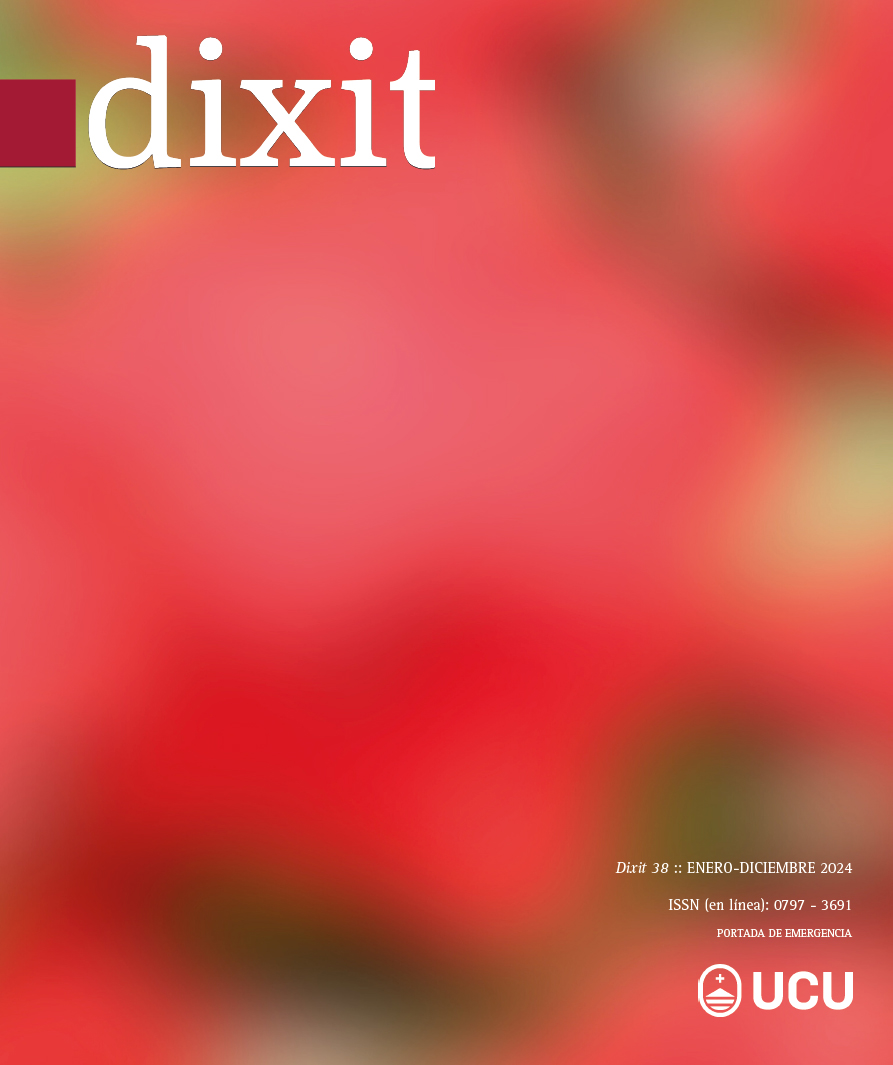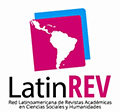Confusion of subjects and objects in the field of digital images
DOI:
https://doi.org/10.22235/d.v38.3105Keywords:
communication theory, representation, expression, digital image, simulationAbstract
The aim of this article is to analyze how digital technologies imply the confusion of subjects and objects in the field of images. It starts from the distinction made by Lucien Sfez between representative and expressive communication, and how there is a tendency towards their confusion in a form that the author called "tautism". The thesis argued is that this tautism —a concept which we consider problematic— is currently a con-fusion of subjects and objects in the field of digital images. Thus, images are considered as third parties that mediate between subjects and objects, generating continuity between them, but without confusing them. Subsequently, expanded cinema, 3D scanning, synthetic images, and the discrete architecture of digital images themselves are analyzed and gathered under the notion of simulation. It is concluded that no image can exist on its own without its connection to subjects and objects, although the digital image tends to conceal it.
Downloads
References
Andermann, J. (2018). Nach der Natur: Bio Art and Unspecific Art. En J. Andermann, L. Blackmore & D. Carrillo Morell (eds.), Natura. Environmental Aesthetics After Landscape (pp. 265-288). Diaphanes.
Barad, K. (2010). Quantum Entanglements and Hauntological Relations of Inheritance: Dis/continuities, SpaceTime Enfoldings, and Justice-to-Come. Derrida Today, 3(2), 240-268. https://feministstudies.ucsc.edu/faculty/publications/pdfs/barad-derrida-today.pdf
Baudrillard, J. (1978). La precesión de los simulacros. En Cultura y simulacro (P. Rovira, trad.) (pp. 5-76). Kairós.
Bensusan, H. (2021). Indexicalism. Realism and the Metaphysics of Paradox. Edinburgh University.
Borisonik, H. (2019). Variaciones sobre la representación en la era digital. Rigel. Revista de estética y filosofía del arte, (8), 164-186. http://www.iintae.com.ar/revistarigel/images/Rigel_VIII/Borisonik-Variaciones_sobre_la_representacion_en_la_era_digital.pdf
Coccia, E. (2011). La vida sensible (M. T. D’Meza, trad.). Marea.
Costa, F. (2021). Tecnoceno. Algoritmos, biohackers y nuevas formas de vida. Taurus.
Deleuze, G. (1989). Simulacro y filosofía antigua (V. Molina, trad.). En Lógica del sentido (pp. 255-280). Paidós.
Durand, C. (2021). Tecnofeudalismo: crítica de la economía digital (V. Goldstein, trad.). La Cebra; Kaxilda.
Jullier, L. (2019). La imagen digital (V. Goldstein, trad.). La Marca.
Korzybski, A. (1994). Science and Sanity. An Introduction to Non-Aristotelian Systems and General Semantics. Institute of General Semantics.
Ludueña Romandini, F. (2018). Arcana Imperii. Tratado metafísico-político. La comunidad de los espectros III. Miño y Dávila.
Machado, A. (2015). Pre-cine y post-cine en diálogo con los nuevos medios digitales (J. Díaz, trad.). La Marca.
Manovich, L. (2016). What is Digital Cinema? En S. Denson & J. Leyda (eds.), Post-Cinema: Theorizing 21st Century Film (pp. 20-50). REFRAME Books.
Peirce, C. S. (1902). Virtual. En J. M. Baldwin (ed.), Dictionary of Philosophy and Psychology, vol. II (pp. 763-764). Macmillan.
Peirce, C. S. (1993). Writings of Charles S. Peirce, vol. 5, 1884-1886 (C. J. W. Kloesel, ed.). Indiana University.
Peirce, C. S. (1994). The Collected Papers of Charles Sanders Peirce (Edición electronica; C. Hartshorne, P. Weiss & A. W. Burks, eds.). InteLex.
Plastino, Á. (2010). De la mecánica cuántica a la información digital. En G. Yoel & A. Figliola (eds.), Bordes y texturas. Reflexiones sobre el número y la imagen (pp. 23-36). Imago Mundi; Universidad Nacional de General Sarmiento.
Rodríguez, P. M. (2019). Las palabras en las cosas. Saber, poder y subjetivación entre algoritmos y biomoléculas. Cactus.
Sadin, É. (2017). La humanidad aumentada. La administración digital del mundo. Caja Negra.
Santaella, L. (2001). “Matter as effete mind”: Peirce’s synechistic ideas on the semiotic threshold. Sign System Studies, 29(1), 49-62. https://ojs.utlib.ee/index.php/sss/article/view/SSS.2001.29.1.04
Schneider, S. (2018). Charles Peirce and the Theory of Disembodiment. En V. Gvozdiak & M. Svantner (eds.), How to Make Our Signs Clear. C. S. Peirce and semiotics (pp. 151-160). Brill Rodopi.
Sfez, L. (1995). Crítica de la comunicación (A. C. Leal, trad.). Amorrortu.
Steyerl, H. (2018). Arte Duty Free. El arte en la era de la guerra civil planetaria (F. Bruno, trad.). Caja Negra.
Youngblood, G. (2012). Cine expandido (M. E. Torrado, trad.). EDUNTREF.
Zelcer, M. (2021). Devenires de lo fotográfico. Imágenes digitales en los dispositivos contemporáneos. Teseo.
Downloads
Published
How to Cite
Issue
Section
License
Copyright (c) 2024 Dixit

This work is licensed under a Creative Commons Attribution-NonCommercial 4.0 International License.
From issue number 32 onwards all contents are licensed under the Creative Commons Attribution 4.0 International License (CC BY 4.0).
Issues number 29-31 are licensed under the Creative Commons Attribution-NonCommercial 4.0 International License.
The contents corresponding to number 28 and earlier editions are under the Creative Commons Attribution-NonCommercial-ShareAlike 4.0 International License.


















